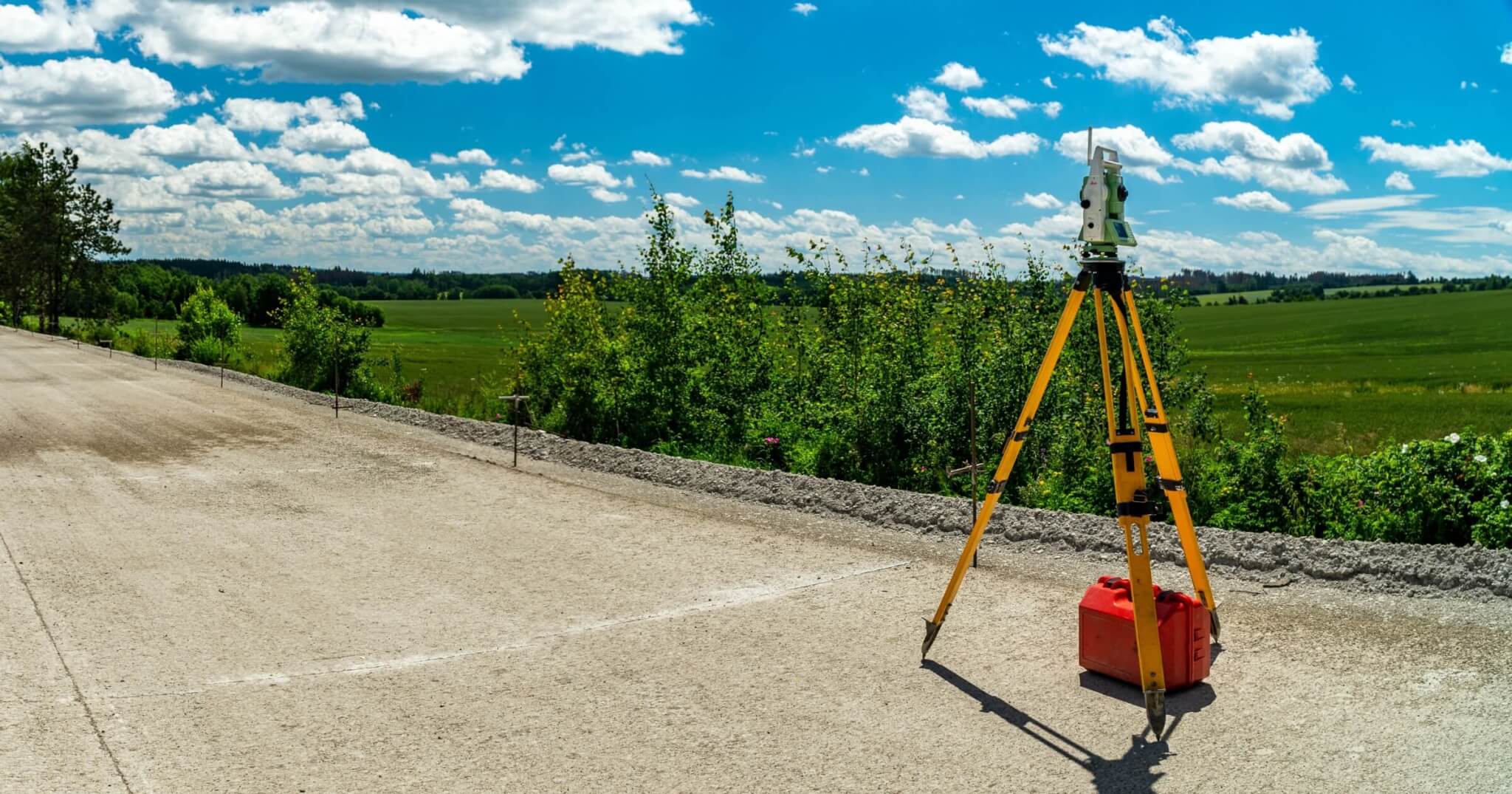If you’re looking for a new career in the trades, and you’re math and data-inclined, a role as a land surveyor might be for you. Here’s the breakdown of how to become a land surveyor, how much they make, and what you need to become fully licensed.
What do land surveyors do?
To put it simply, land surveyors make precise measurements to outline property boundaries. They do this by analyzing the Earth’s surface, including contour and shape. Once they’ve collected this information, it’s then leveraged by mapmakers, construction professionals, designers, and civil engineers.
Other land surveyor tasks include:
- Recording the angles and distances between points below, on, and above the ground.
- Using current and historical boundaries to indicate where boundary lines should be.
- Using established reference points to locate important features and landmarks.
- Preparing maps, plots, and data reports.
- Researching land records and land titles.
- Presenting official water and land boundaries for leases, deeds, and other legal and government documents.
- Testifying in court as needed as an expert in land surveying.
How long does it take to become a land surveyor?

Unlike many trades that only require an apprenticeship and some on-the-job training, it takes extensive education to become a land surveyor. First, you’ll need a bachelor’s degree (4 years) in surveying itself or a related field.
Once you graduate, you’ll need on-site experience under a licensed surveyor, which could take several years, depending on what your state requires. After that, you’ll need to complete a two-part state-administered licensing exam, the Fundamentals of Surveying (FS) and the Principles and Practices of Surveying (PS).
All in all, it takes around 8 years to become a licensed surveyor.
How much does it cost to become a land surveyor?
The cost to become a surveyor also depends on the exact route you take. Different education institutions may have ranging tuition, and some training programs may have high fees associated with them. Considering education, examinations, application fees, and additional costs, the total expense to become a licensed land surveyor in the U.S. can range from approximately $15,000 to $40,000 or more, depending on the educational path chosen and state-specific requirements.
However, compared to many highly educated trades, it’s not expensive, and most surveyors quickly recoup the costs. If you can luck out and a local company is hiring, they may even foot the bill to put you through the required schooling.
How much do land surveyors make?
A land surveyor in the United States makes, on average, $74,746 per year, or $36 per hour. More urban areas and places with higher costs of living pay more, and typically the more inexpensive areas pay slightly less.
California pays the most, with the average surveyor in Larkspur bringing in around $91,712 per year. If you’re not in California and you’d like to earn more, you can look into career advancement and specialization opportunities. If you put in the extra work to specialize or move into leadership, you could earn more as a Survey Manager or Civil Engineer Land Surveyor.
5 steps to become a land surveyor in the United States
1. Get your degree
Surveying requires the use of advanced mathematics and highly technical equipment. That’s why in most states it’s required that surveyors first get their bachelor’s degree. Depending on the state, workers may also have to complete an Accreditation Board for Engineering and Technology (ABET) accredited program to qualify for licensing post-grad.
Most ABET-accredited institutions offer surveying-specific programs. The course load will most likely include geography, cartography, physics, calculus, geology, and surveying techniques.
2. Complete the FS exam
The Fundamentals of Surveying (FS) exam is a post-grad step offered by the National Council of Examiners for Engineering and Surveying (NCEES). Students or grads must take the FS exam and pass it to become a surveyor-in-training. Once successful, the next step is to work in the field with a licensed surveyor who will guide and supervise you as you gain on-site experience.
3. Get some work experience in
The on-site portion with a licensed surveyor could take several years, depending on the requirements of the state. During this time, you’ll build your portfolio of experience, learning the ins and outs of the work in the field and in the office. Once you’ve completed the required number of years, you can apply for the next licensing exam.
4. Complete the PS exam
The second exam to become a surveyor is the Professional Surveyor (PS) licensing exam, also put together by the NCEES. After completing the mandatory number of years as a surveyor-in-training, you can book this exam independently or through the company you work for, if applicable.
Once you receive your passing score, the only thing left is to receive your license.
5. Receive your license through your state
Finally! After years doing your bachelor’s degree, completing two licensing exams, and putting in years of on-site work, you’re almost done.
The FS and the PS exams grant you your national licence, and once you have that, you can sit for your state-specific exam. All surveyors must take the state licensure exam in order to work professionally in that state. Once complete, you’ll receive both state and federal licenses, and you can apply for jobs and work professionally in the field.
Tips for success as a land surveyor in the United States
All of the tips and pointers for being a successful land surveyor will come from your extensive education and training. However, if you want to thrive in your role, you should:
- Be tech-oriented. Surveyors work with specialized technology and equipment, including theodolites, GPS, robotic measuring tools, radar equipment, and more.
- Be a good communicator. Surveyors need to communicate trends, reports, analyses, and other findings to builders and the government.
- Be a critical thinker. You need to be a self-starting critical thinker to determine areas of measurement, learn new equipment, and digest data.
- Be collaborative: Surveyors work with managers, engineers, and other trade professionals in their day-to-day.
Is land surveying a good career?

Land surveying is a great career choice that’s closely related to the professional work of civil engineers, urban planners, architects, and cartographers. Surveys have consistent hours, financial stability, a clear route to growth, and are challenged intellectually on the job.
The career also includes work both in the field and at the office. It’s a great match for people who want to zoom in on strategy and data, but also spend time outdoors. Because it’s highly specialized and the construction industry is facing a labor shortage, it also offers a lot of job security. It’s a fast-paced career that keeps people feeling important and valued every day.
Final thoughts
If you’re a data-oriented person who values being outside and intellectually challenged, being a land surveyor could be the perfect career. Although it does take roughly 8 years of education and training, the job is well worth it and offers many avenues for specialization and growth.
It takes a tech-inclined, critical thinking, collaborative person for the role, and the financial stability and job security are the cherry on top of a long, rewarding career.
If you enjoyed this article on how to become a land surveyor, you might also enjoy:
- Your 2025 guide to apprenticeships
- How apprenticeships give students a one-up in the trades
- The best entry-level construction jobs
- Why finding the right mentor can transform your skilled trades career
Don’t forget to subscribe to the newsletter and follow us on LinkedIn to stay informed about all things AEC!


